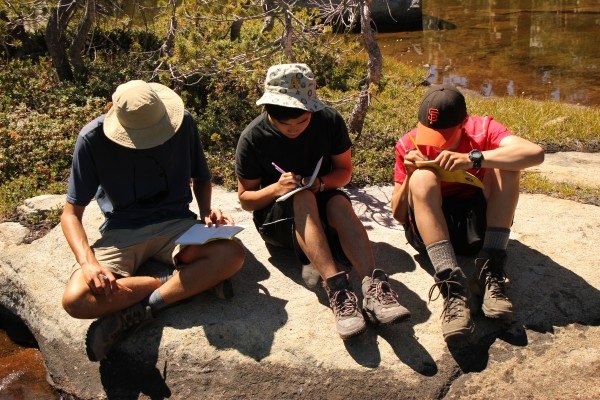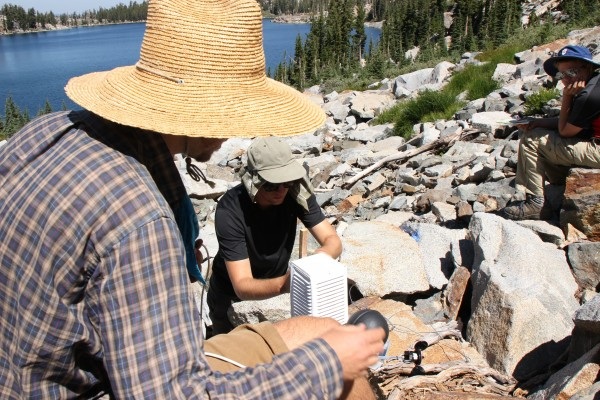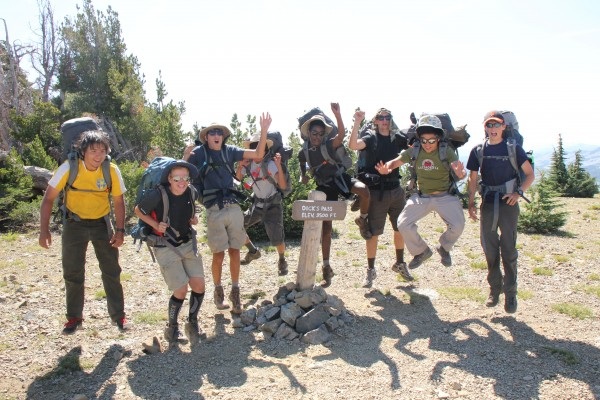Learning to Eat Ants with Students in the Desolation Wilderness, CA
We yell for Albert, our “leader of the day”, to join us on the cliff’s edge.
“What do you think about wrapping up here?” I ask,
“But, we haven’t finished counting plants yet.” he responds, “we’re only at 3,000”
This is in a nutshell why I love working with students on adventure-science expeditions. They always seem to bring an unrivaled enthusiasm for the task at hand and an unwavering curiosity about the world around.
“One great experience that we shared with Nikki and Jeff [our ASC guides] was when Jeff demonstrated how bears eat Thatching Ants out of the nest and we all joined the feast!” – Alberta Born-Weiss, Marin Academy Student
“The pika observations were very intriguing and learning to think critically about what we could do to improve or tweak the experiment was interesting. Going to all the small, isolated bodies of water to collect diatom samples and hoping to find a new species, or perhaps an indication of global warming made me glad that our data had a chance of revealing new evidence of climate change.” – Juliet Emerson-Colvin Marin Academy Student
This group of students was participating in one of ASC’s guided outings where we provide the opportunity for students, military vets, and community members to take part it actual scientific data collection.
Alberta continues,
“The first scientific project that we girls worked on was collecting data on the behavior of pika (the smallest members of the rabbit family) with researcher Joseph Stewart. Over the next few days, we also collected diatom samples from isolated ponds. Wherever we hiked, I indulged my curiosity by asking our guides the names and properties of plants we saw along the trail. By the end of the trip, we had learned to identify six main plant families and many of the local trees.”
If I think back to my first experiences in the outdoors, they were on expeditions much like this one. Though it didn’t involve scientific data collection, when I was sixteen, I had the opportunity to join other kids my age in British Colombia. The experience of climbing my first peak, paddling on the ocean, and looking out over Chef’s Hat Lake had an impact on me that I certainly didn’t understand at the time. The experience changed my life and is without a doubt a driving factor in my life today. I am lucky to be able to offer these students a similar glimpse into what they can accomplish in the outdoors. Juliet wrote me about this experience:
“The outdoors have a strange effect when you come home. Suddenly all the landscapes seem so much smaller and plants more interesting. I wanted to be out in the sun or climbing a mountain more than I wanted to stay home or watch TV.”



